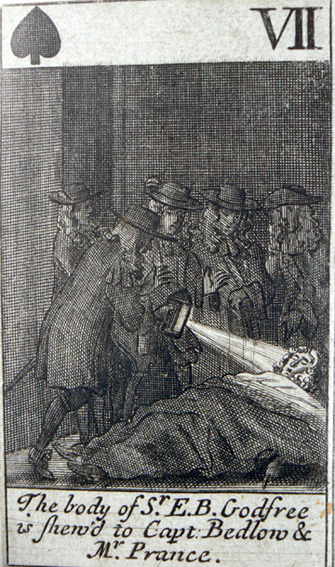MILES PRANCE
It is not difficult to be confused by
the following accounts concerning the Popish Plot which was
'discovered' by Titus Oates in the year 1678. A great deal obviously
relied on the evidence given by Miles Prance to the enquiring
committees but what is certain is that he, for reasons we can only
speculate about, gave different accounts of his actions on oath,
committed perjury and suffered heavily for it. The plot and the murder
of Sir Edmund Godfrey caused a sensation in London at the time and the
fact that the king was involved and indeed threatened indicates the
seriousness and high profile of the events which took place. Simon
Prance, his father, grew up as a protestant but during the civil war
became a catholic and brought up his children, which included Miles, in
that faith. Included here is the entry for Miles Prance in the
Dictionary of National Biography (To be found in most good libraries)
and below that the introduction to the 'Narrative' which Miles wrote
and which was later published.
.........................................




